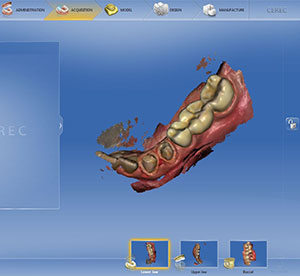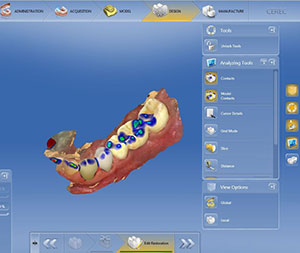
As a way of giving back to our community, the team at Digital Dentistry at Southpoint (DD@S) has chosen TROSA as our favored charity. TROSA helps people with drug addiction get their lives back on track in a way that is awe inspiring to us at DD@S, and we are happy to help.
The TROSA Program
People with an addiction must apply to the TROSA program themselves. An intervening family cannot force someone to go into this program. TROSA is very successful at rehabilitating addicts because it first removes everything that enables addicts to use, including friends, family, phones, money, and any contact with their former life and replacing those things with around the clock positive input.
As participants progress in the program, they gradually are allowed access to things they once had as long as they use those things in a positive and healthy manner. They are taught how to make a living in several different ways, such as moving and landscaping. Those who get far enough along in the rehab process get the opportunity to work, which keeps them very busy and away from any opportunities to fall back into their former bad habits.
Sometimes, they need dental work done, and we donate our services to see these patients several times a year. They present us with some special requirements because of how closely they have to be monitored and, of course, we cannot prescribe any pain medication.
We have been using CEREC, which is a computer-aided design and manufacturing technology, for many years at DD@S. Our expertise with CEREC enables us to create precise custom fittings of fillings, inlays, and crowns in a very short amount of time during the patient’s visit.
Since we use CEREC, we can do permanent crown and bridge restorations in one visit, which allows us to be very efficient in helping these patients. It is important that we limit the number of visits because of how tightly monitored they are on a daily basis.
 |
 |
| Figure 2: Scan of the bridge in place and crown preps for teeth Nos. 21 and 22. | Figure 3: Images of the lower left quadrant restored. |
Treating Jane
We recently took on a patient, “Jane,” who had extensive decay in all four quadrants. We were able to restore her lower left quadrant in one visit.
I have an endodontist who shares our passion for the good work that TROSA does, and we work together on treating these patients at no charge. So, after my initial exam and treatment planning session, it was determined that Jane was missing tooth No. 19 and had extensive decay in teeth Nos. 18, 20, 21, and 22.
Jane was complaining of tooth pain, so we referred her to endo for root canal therapy on teeth Nos. 20, 21, and 22. The endodontist basically removed the pulp and cleaned, disinfected, and then sealed each tooth.
I felt that the decay in tooth No. 18 was not into the nerve and that I could use it as a bridge abutment without needing endo. After having the endo completed, we wanted to complete her restorative work in that quadrant in one visit.
Buildups were done using fiber posts bonded with Ivolclar Viviadent’s Multilink Automix. We like Multilink Automix because it’s good for silicate and oxide ceramics and metal, and it makes a strong hold.
Teeth Nos. 18 and 20 were prepped as abutments for a three-unit bridge using CEREC and milling zirconia (Figure 1). We also used a Dentsply Sirona inCoris zirconia block in Shade A1 milled wet.
The wet milling of zirconia goes faster than dry milling but then takes a little longer to sinter because the furnace must pre-dry the restoration before sintering. The entire furnace operation including staining and glazing took about 45 minutes, and the bridge was cemented in using 3M Durelon carboxylate luting cement.
I decided to complete the bridge first and do the crowns for teeth Nos. 21 and 22 as a separate CEREC scan because I was using Dentsply Sirona Celtra Duo material on those crowns for a better aesthetic result, and my CEREC machine isn’t capable of designing and milling these different materials using the same scan (Figure 2).
Teeth Nos. 21 and 22 were restored with CEREC and Celtra Duo Shade A2 and bonded with Multilink Automix (Figure 3). After cleaning up the cement materials and checking the occlusion, we handed the mirror to Jane, who took one look and started to cry tears of joy.
She had come a very long way.
Jane’s addiction to methamphetamine had nearly cost her life. Once she decided to get her life back with the help of TROSA, she then could get her smile back. DD@S is very happy to help with that.
Dr. Schlotterer graduated from the Louisiana State University School of Dentistry in 1987. He then moved to Durham, North Carolina, and opened his own private practice, where he has been taking care of patients ever since. He is the proud father of two sons and an avid golfer as well.
Related Articles
Dentists Advised to Look for Meth Mouth
Focus On: Treatment Planning for Success
Drug Use Linked to Poor Oral Health











